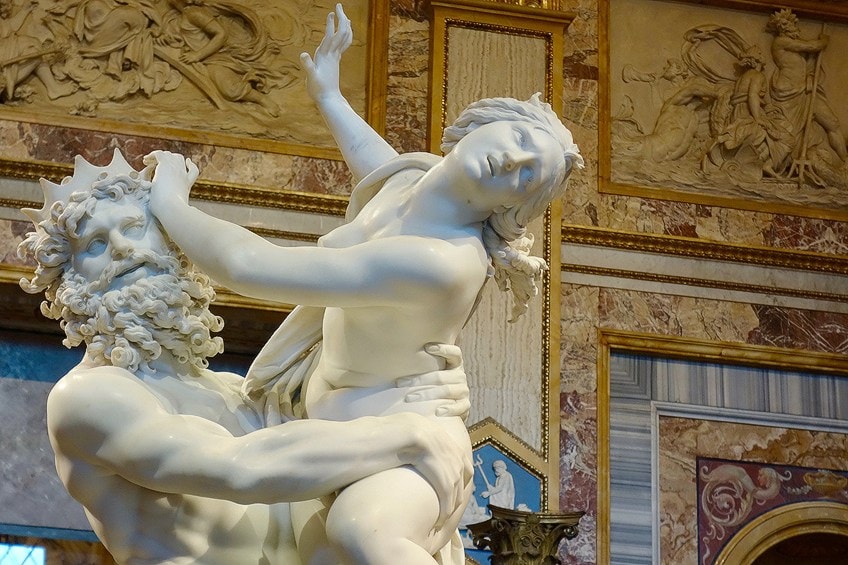The Rape of Proserpina – Bernini’s Baroque Masterpiece
Gian Lorenzo Bernini’s sculpture, The Rape of Proserpina (also known as El Rapto de Proserpina) portrays the mythical abduction of Proserpina by Pluto. Along with many other of Bernini’s artworks from his early period, it was ordered to be produced by Cardinal Borghese. Work on Bernini’s statue started in 1621, and it was completed the following year when the artist was only 23 years of age.
Gian Lorenzo Bernini’s Sculpture, The Rape of Proserpina
Proserpina was the daughter of Zeus and the ruler of the Afterlife in Greek mythology. Pluto, the god of the underworld, abducted Persephone and took her back to the otherworld to be his bride one day as the young girl was collecting flowers. Cardinal Scipione Borghese authorized Bernini’s statue based on this myth in 1621, handing it to Cardinal Ludovisi in 1622. In 1908, Bernini’s statue was acquired by the state and relocated to the Galleria Borghese.
But who is Bernini, the man behind the famous sculpture?
An Introduction to Gian Lorenzo Bernini
| Nationality | Italian |
| Date of Birth | 7 December 1598 |
| Date of Death | 28 November 1680 |
| Place of Birth | Naples, Italy |
Gian Lorenzo Bernini, the Italian sculptor and architect, was driven by a passion beyond all else. His great religious piety, along with a lifetime study of the sculptural form, resulted in the development of a dynamic and flamboyant style, centered on emotional expressionism, that fully reflected the Baroque period. His style and ideas were so innovative that they heralded a new era in European sculpture that continues unabated to have an effect on the medium to this very day.
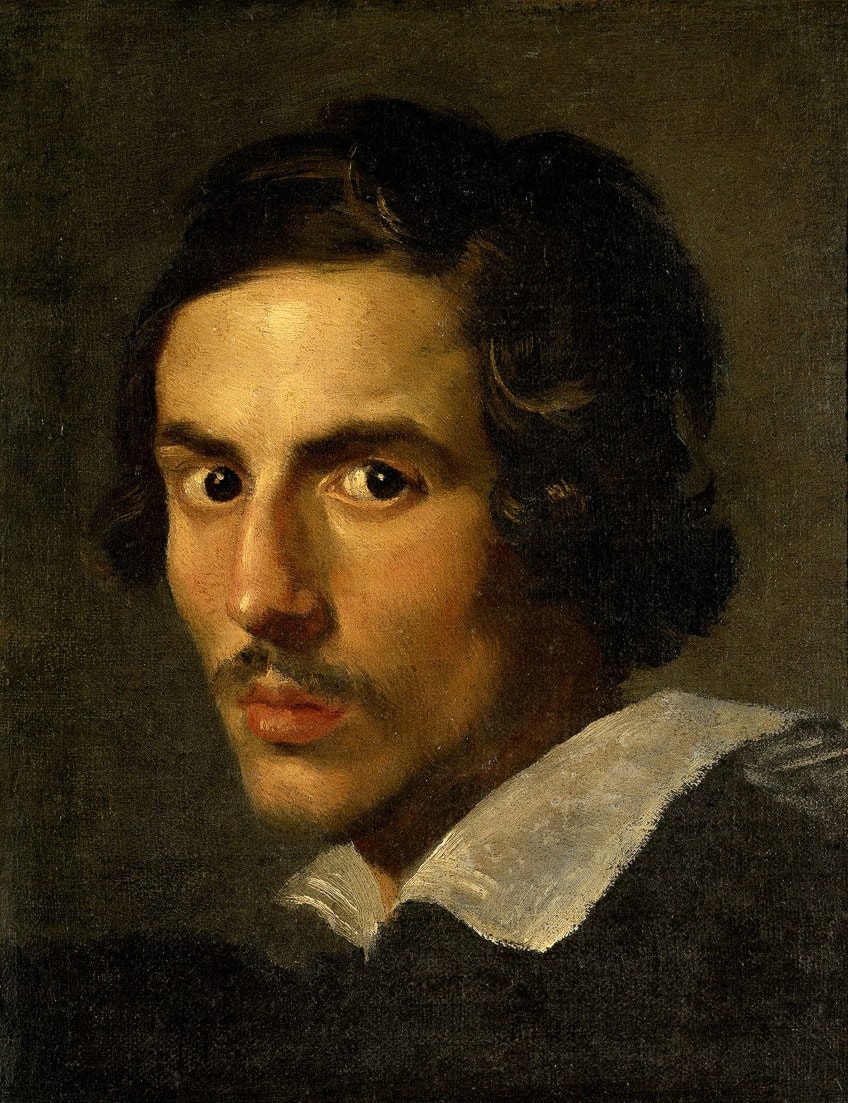
Bernini, along with his contemporaries Pietro da Cortona and Francesco Borromini, was an important figure in the development of Roman Baroque architecture. His concepts helped restore Rome to its former architectural beauty through an elaborate urban planning project sponsored by the important Roman Popes of the time.
Bernini’s conviction that aesthetics should be acquired through viewing society and the environment instead of analyzing Classical statues or Renaissance artworks represented a shift from traditional techniques of production.
Up until the Modernist era, his expanding focus on human experience and passion impacted other artists. His dramatic representation of the body was also groundbreaking in painting, offering a level of technical proficiency that is being studied today. Bernini’s artworks popularized the concept of “spoken resemblance.” He thought that capturing someone in the middle of a conversation or just as they were about to express something was the most authentic method for obtaining their true personas.
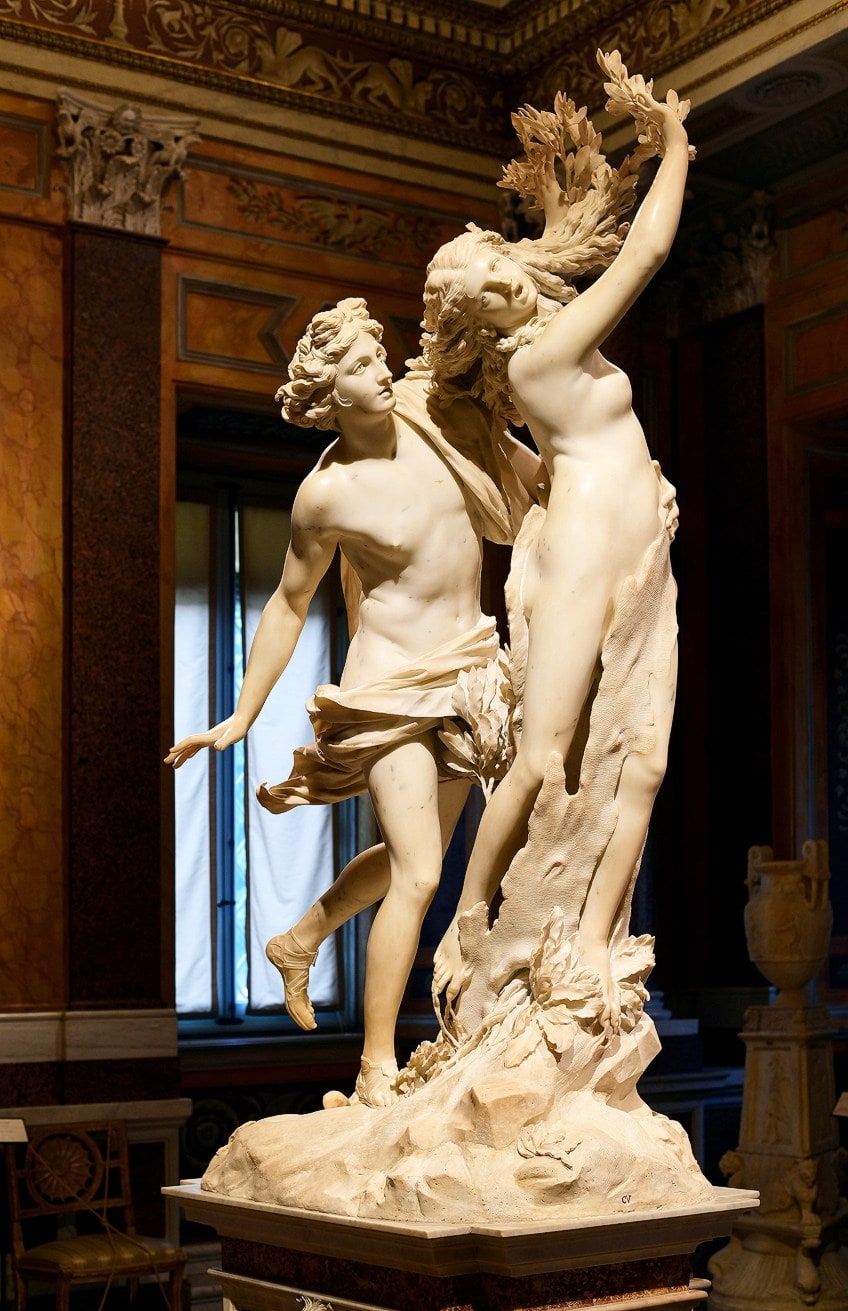
Bernini revolutionized the function of sculptural heads, which had hitherto only served as formal portraits for graves. In his hands, they became an art form, enabling the display of casual pictures of the living, an approach that had not been utilized consistently since Ancient Rome.
Bernini changed the way statues were shown forever. He typically created them “in the round,” which pertains to pieces that exist alone in enormous spaces and are meant to be seen from all angles by the viewer, enhancing the whole experience and connection with a piece of artwork. Bernini’s stylistic versatility, conceptual inventiveness, and perfect command of marble manipulation ensured that he would be considered as a worthy successor to Michelangelo, far outstripping other painters of the time. His abilities extended beyond sculpture and embraced a wide range of skills.
The ability of Bernini’s work to unite architecture, sculptures, and painting into a philosophically cohesive and beautiful whole has been referred to as the “unity of the creative arts” by art historian Irving Lavin.
A Closer Look at The Rape of Proserpina
| Year Completed | 1622 |
| Medium | Marble |
| Period | Baroque |
| Current Location | Borghese Gallery and Museum |
In the 17th century, Italian painters began to embrace a more ornate style. This turn toward an elaborate, over-the-top style, known as the Baroque movement, can be seen in both architecture and art of the time, with the maestro of materials Gian Lorenzo Bernini in the fore. Bernini was a great sculptor who, in addition to creating St. Peter’s Basilica (one of Italy’s most iconic monuments), created The Rape of Proserpina.
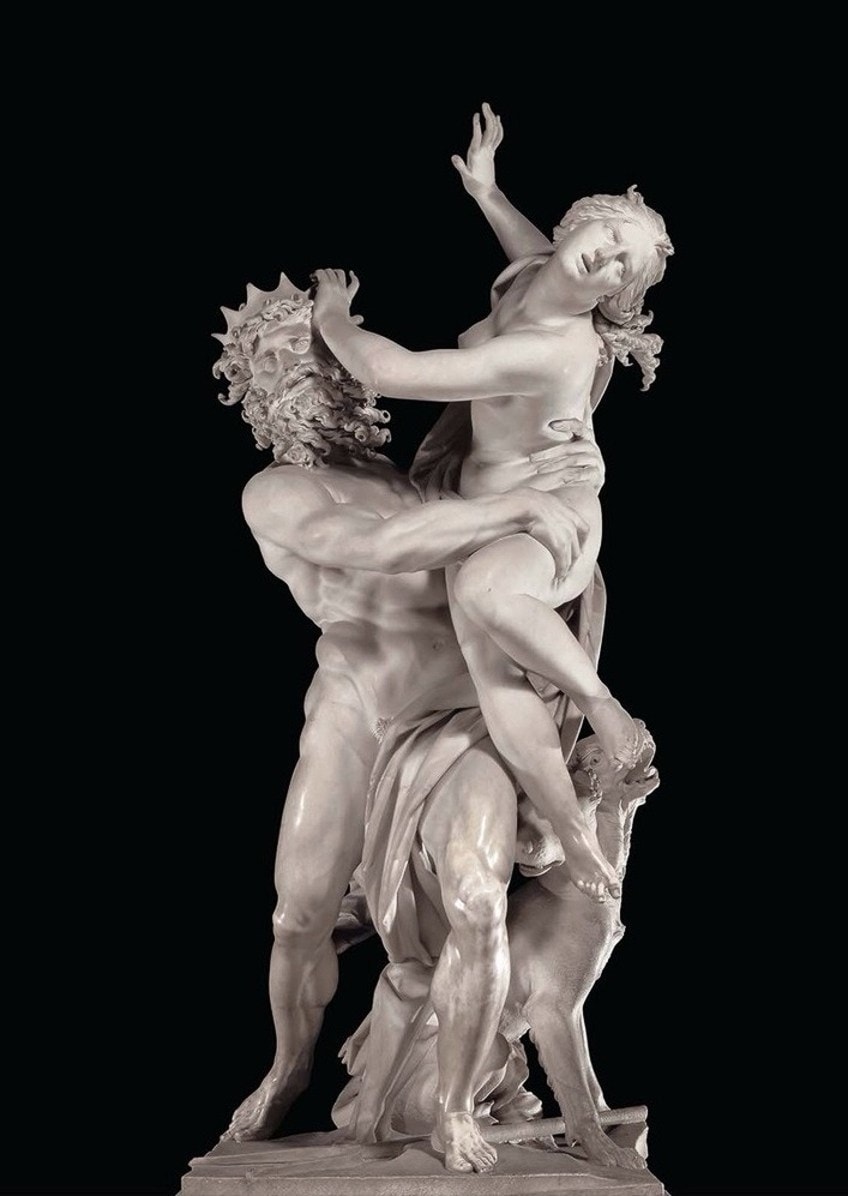
This early 17th-century marble sculpture exhibits some of Bernini’s talents, particularly his knowledge of biology and abilities to generate both dynamic motion and a sense of drama. While the craftsman’s abilities are still praised to the present day, the work’s disagreeable subject matter casts a negative shadow over it, despite the fact that it is a classic achievement of both marble sculpture and the Baroque era overall. Between 1621 and 1622, Bernini produced The Rapture of Proserpina.
Despite the fact that the artist from Naples was only 23 years old at the time, he was already achieving success as a rising artist.
While he would not finish his architectural masterwork, St. Peter’s Basilica, for another 40 years, he had already established himself as a renowned sculptor in the early 1620s with four works of art: Aeneas, Anchises, and Ascanius; David; Apollo and Daphne; and, of course, The Rape of Proserpina. The artwork, which stands approximately 7.5 feet tall, is carved from Carrara marble, a stone that originated from Tuscany that was historically employed by ancient Roman architects and, more recently, by Mannerism and Renaissance painters.
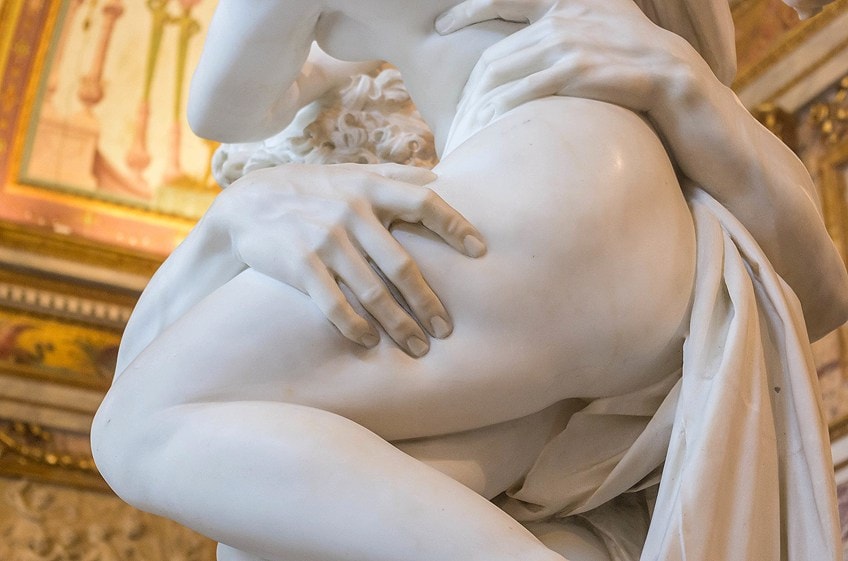
Bernini’s artistry benefited from the softness of this high-quality marble, as he “prided himself on being capable of giving marble the illusion of flesh.” This interest in transforming a stone into a realistic semblance of skin is most evident in The Rape of Proserpina, a sculpture intended to convey traumatic captivity (the term “rape” in the title of this piece actually refers to the act of abduction).
Bernini’s dedication and concern in realism are obvious in the artwork’s anatomical features, which were “pressed to the point of touching the physical boundaries of marble.” As Pluto’s hand grasps Proserpina’s thigh, his grabbing fingers seem to dig into her presumably delicate flesh. Similarly, when he tries to overcome her, the muscles in his bent knees and rigid arms protrude, whilst her streaming hair and twisting draperies imply mobility.
The El Rapto de Prosperina, like many of Bernini’s artworks from his early period, was commissioned by Cardinal Scipione Borghese, an enthusiastic art collector and loyal supporter of both Bernini and Caravaggio.
After the High Renaissance, there was a growing demand in restoring a Classical style to painting, incorporating themes informed by Ancient Greek and Roman culture.
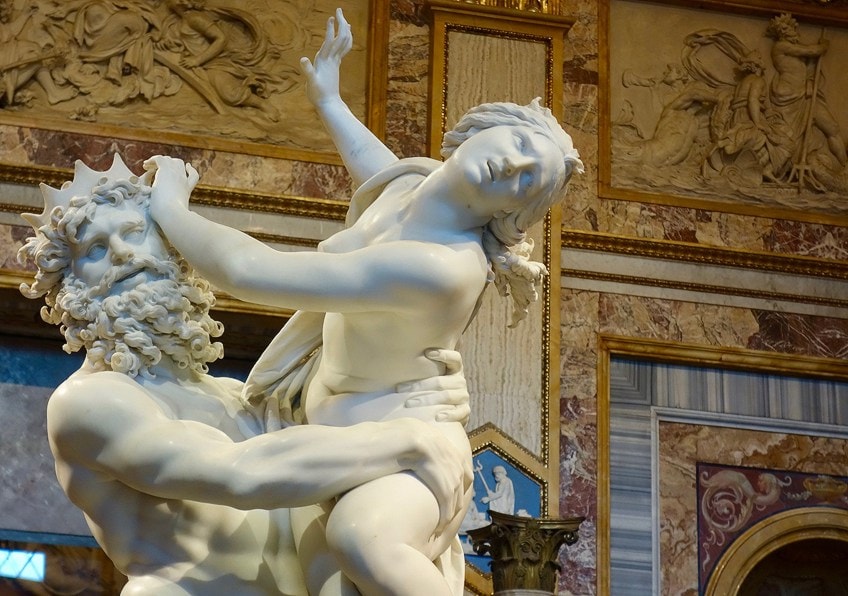
The Original Myth
This sculpture depicts a scene from the legend of Pluto and Proserpina. Proserpina, the child of Jupiter, is kidnapped in this fable. Proserpina was assaulted while collecting flowers by an enthralled Pluto, the god of the underworld, who sprang from the soil in a chariot drawn by four black horses. Ceres heard her child scream as she was taken down into the underworld, but she was too late.
“She grew enraged and caused the soil to dry up, and the harvests to fail,” the Getty says, “after she knew Pluto had taken Proserpine.”
The world was desolate and lifeless, Jupiter beheld from the skies. He decided to interfere, and a solution was ultimately struck: She would spend half of the year with her mother and the other half with Pluto in the underworld.”
https://www.youtube.com/watch?v=ZvpjsEIS94g
Modern Interpretations
Given the tragic nature of the event, it’s no wonder that Bernini’s statue has sparked controversy throughout the decades. Bernini’s depiction of such an unsavory scenario received widespread acclaim soon after its completion (the artist’s son and biographer described it as “an astonishing combination of tenderness and brutality”), but applauding an image portraying a violent kidnapping might be problematic in today’s setting.
The Director of the Fine Arts Museums of San Francisco, Thomas Campbell, has commended the piece’s “compelling, hypnotizing, even inspirational” aspects. “And yet,” he continued, “I’m currently seriously struggling to reconfigure my opinions on this artwork since a subject that I used to consider almost as a scholarly premise for virtuoso sculpture—after all, abduction scenes are prevalent in Renaissance and Baroque art—seems much less intellectual two years after the start of the ‘Me Too’ movement.” Today debates about potentially contentious pieces of art—and even creative types taking center stage.
However, in the instance of “The Rape of Proserpina”, reframing the subject matter via both a classical and modern lens helps us to appreciate the craftsmanship while being critical of the presented content.
Analysis
This magnificent sculpture, also known as The Rape of Persephone, embodies the finest of the Baroque period and exhibits Bernini’s skill to work with marble and create convincing people. The Rape of Proserpina, like his earlier works, is loaded with passion and suspense, attaining a hitherto unknown level of life-like movement.
Bernini’s artworks are distinguished by their minute attention to detail, extravagant theatricality, and intricate design.
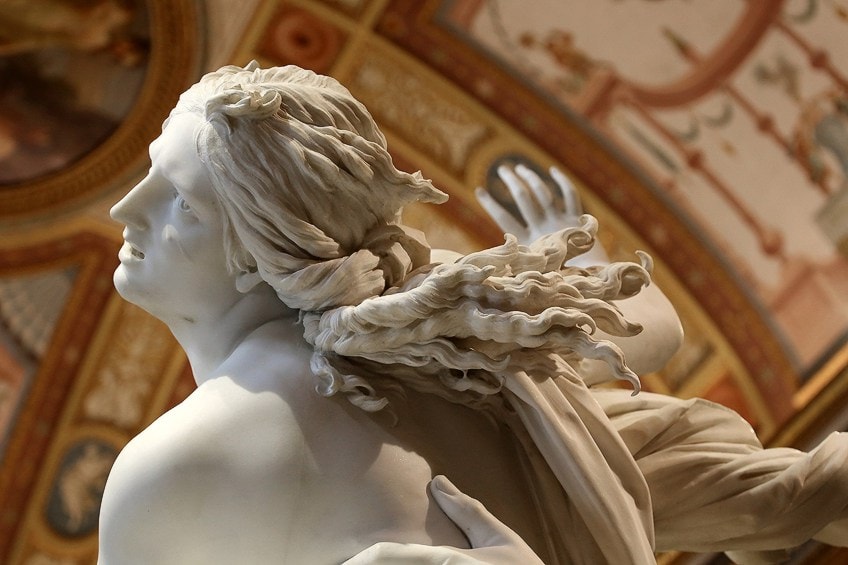
Bernini chose to show the story’s most emotional, “pregnant” moment; the scene is packed with heartbreaking emotion. Bernini is recognized for depicting the most moving point in a tale and presenting it in the most spectacular way possible, using exuberant movement, passionate facial expressions, and technical expertise. The figures in The Rape of Persephone twist and strain in opposite directions, indicating a Mannerism influence; their tight battle is filled with an explosive vitality.
Not only are the people depicted in a frenzy of movement, but the observer is invited to walk around the artwork in order to take it all in.
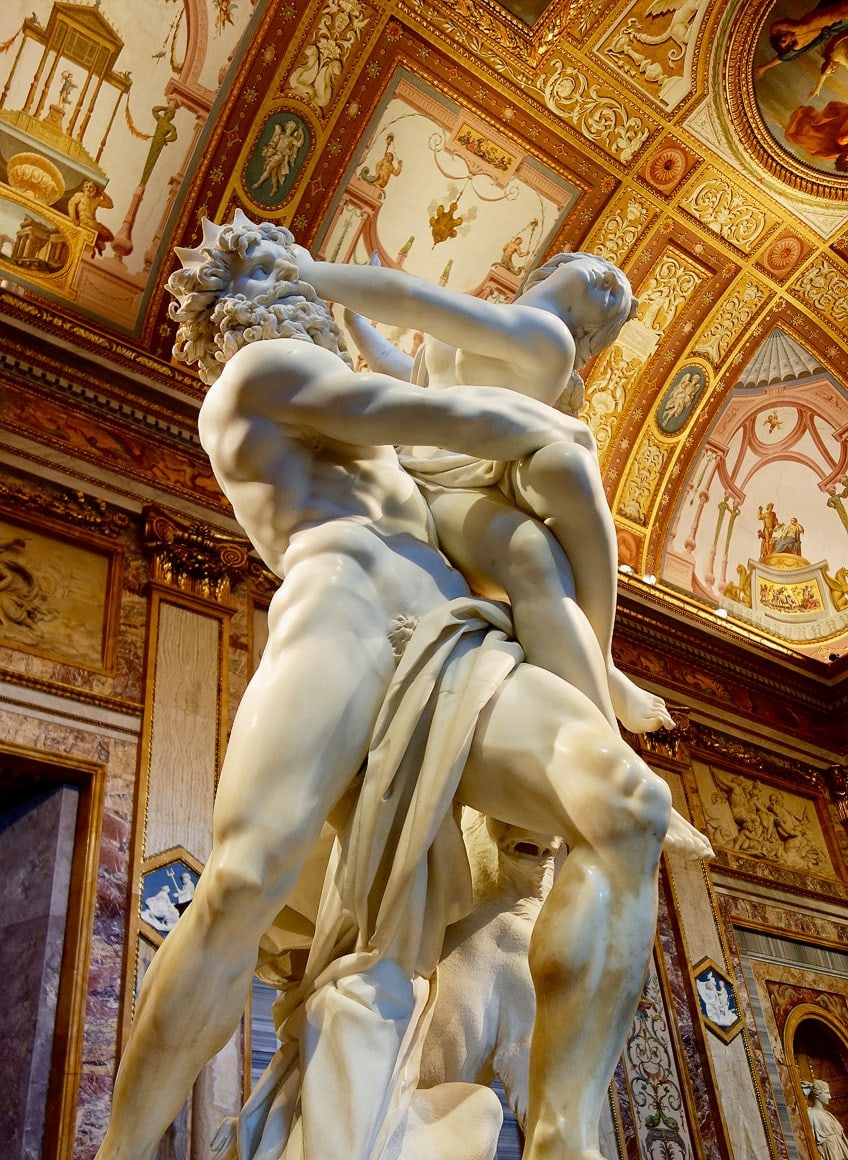
These are hardly the gritty streetwalkers who litter Caravaggio’s paintings, but some details, particularly the dimpling of Persephone’s skin as Pluto’s fingers sink into her thigh and waist, are astounding for their realism.
Despite the fact that his characters are always rather idealized, like a polished version of reality, Bernini tends to provide them with distinctive traits and fill them with human emotion, and he never overlooks the precise details that assist to bring his sculptures to reality.
Bernini’s masterpieces, such as The Rape of Proserpina, were not restricted by the materials he used; by carving his white marble, he strove to depict dynamism, vitality, and passion. His accomplishment is undeniable, and as a genuine master of reality and passion, he has won not just admiration but also a sizable fan base.
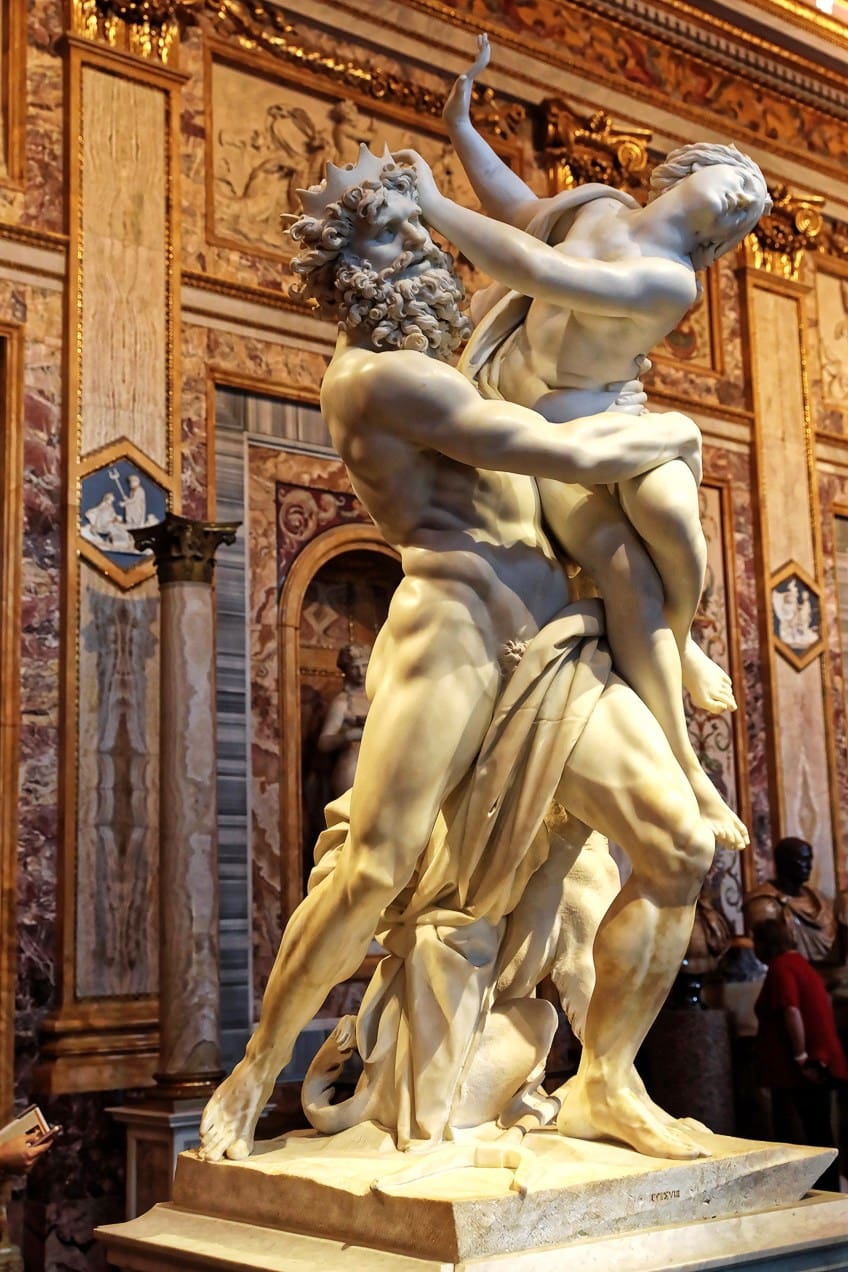
Throughout his career, Bernini was inundated with commissions, much to the chagrin of other painters and imitators. He was regarded as one of the most acclaimed and sought-after painters, having a stellar reputation. Contemporaries in Italy and France lauded the artist with lengthy biographies, certain of the talent in their midst.
“The Rape of Proserpina” (or “El Rapto de Proserpina”) by Gian Lorenzo Bernini depicts the fabled abduction of Prosperina by Pluto. Cardinal Borghese commissioned it, along with several other works by Bernini from his early years. Bernini’s statue was begun in 1621 and completed the following year when the artist was only 23 years old. This magnificent sculpture embodies the finest of the Baroque era and exhibits Bernini’s skill to sculpt with marble and produce lifelike figures.
Frequently Asked Questions
Who Created the Rape of Proserpina Statue?
Gian Lorenzo Bernini created The Rapture of Proserpina between 1621 and 1622. Despite being only 23 years old at the time, the artist from Naples was already enjoying success as a young artist. Bernini’s passion and care for realism may be seen in the anatomical aspects of the artwork, which were pressed to the point of reaching the physical limitations of marble. Cardinal Borghese commissioned it, along with several other works by Bernini from his early years.
What Is Gian Lorenzo Bernini’s Sculpture About?
This sculpture represents a scene from Pluto and Proserpina’s mythology. In this legend, Proserpina, Zeus’s offspring, is stolen. An enchanted Pluto, the god of the underworld, burst from the dirt in a chariot driven by four dark horses and attacked Proserpina as she was picking flowers. Ceres could hear her child wail as she was dragged into the abyss, but it was too late to make a difference. As a result of discovering that Pluto had kidnapped Proserpina, Ceres grew so angry that the land and crops all dried up. Jupiter observed the world from above, which was desolate and lifeless. He decided to intervene, and a deal was struck: she would end up spending half of her time with her mother and the other half with the god Pluto in the underworld.
Isabella studied at the University of Cape Town in South Africa and graduated with a Bachelor of Arts majoring in English Literature & Language and Psychology. Throughout her undergraduate years, she took Art History as an additional subject and absolutely loved it. Building on from her art history knowledge that began in high school, art has always been a particular area of fascination for her. From learning about artworks previously unknown to her, or sharpening her existing understanding of specific works, the ability to continue learning within this interesting sphere excites her greatly.
Her focal points of interest in art history encompass profiling specific artists and art movements, as it is these areas where she is able to really dig deep into the rich narrative of the art world. Additionally, she particularly enjoys exploring the different artistic styles of the 20th century, as well as the important impact that female artists have had on the development of art history.
Learn more about Isabella Meyer and the Art in Context Team.
Cite this Article
Isabella, Meyer, “The Rape of Proserpina – Bernini’s Baroque Masterpiece.” Art in Context. February 9, 2022. URL: https://artincontext.org/the-rape-of-proserpina/
Meyer, I. (2022, 9 February). The Rape of Proserpina – Bernini’s Baroque Masterpiece. Art in Context. https://artincontext.org/the-rape-of-proserpina/
Meyer, Isabella. “The Rape of Proserpina – Bernini’s Baroque Masterpiece.” Art in Context, February 9, 2022. https://artincontext.org/the-rape-of-proserpina/.


